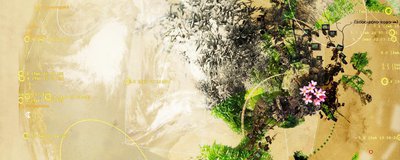GroWorld: Experiments in vegetal culture

Abstract
At the intersections of culture, gardening and technology we can start to see how plants can become organisational principles for human society in the turbulent times of the 21st century. Although we may need to scavenge at the fringes of contemporary society, we can observe many healing effects that humans can have on their surroundings through a symbiotic collaboration with plants. Some fight desertification and remediate industrial wastelands through natural farming and permaculture. Others design whole lifecycle, closed-loop technological and architectural systems inspired by natural processes, based on the art and science of biomimicry. Yet, these are scattered examples. We still don’t have widespread methods to improve wasteful, often counter-productive human behaviours. How do we encourage broader, longer-term cultural changes? What varieties of culture would be capable of forging symbiotic relationships between postindustrial human societies and the rest of the earth? How do we compost bitterness to grow beauty?
From these questions and assertions sprouted the groWorld initiative, a long-term inquiry into human-plant interactions and their effect on the longevity of human culture. Inspired by the way in which plant species propagate – spanning multiple temporal layers – the initiative encompasses both long- and short-term explorations. The slow processes of cultural adaptation and plant cultivation are researched across several decades, through observation and interaction. At the same time, quick technological and social changes are incorporated through techno-artistic experiments in three interconnected branches: {sym}, {bio} and {sys}. The {sym} branch looks at how human culture can be infused with vegetal characteristics: in botanical fiction, plant games, active materials, and responsive environments. The {bio} branch is about a direct collaboration with plants, using age-old techniques of foraging and gardening and seeing cities as edible landscapes for humans and non-humans. Finally, {sys} deals with botanically-inspired technologies that can help humans engage with plants beyond the physical level, through sensing, perception and perhaps even communication.
Published in the Fourth Door Review Number 9: The Sūnyata Seeds edition







